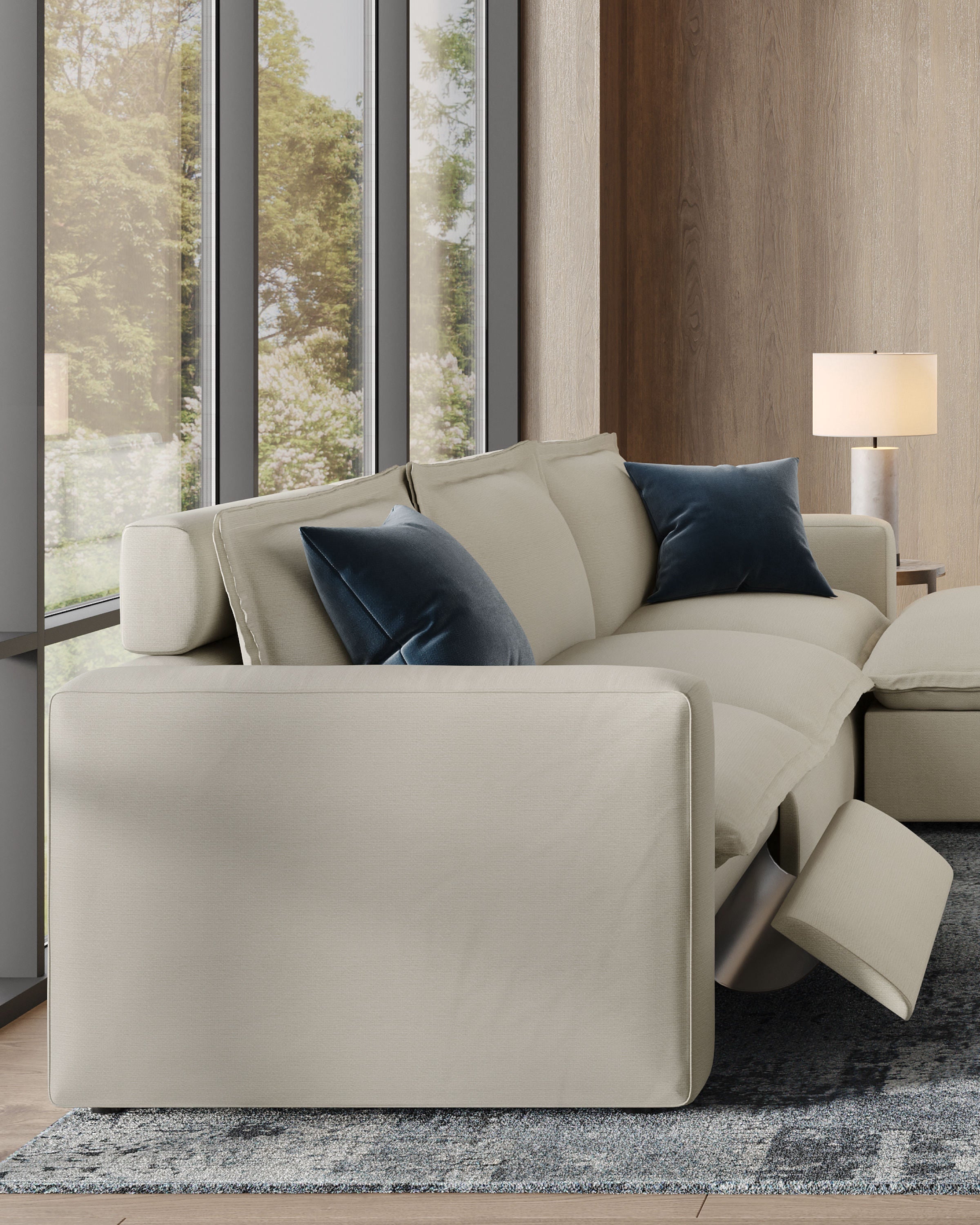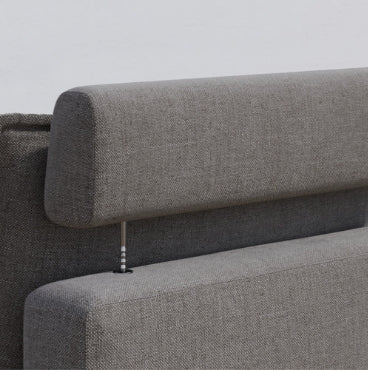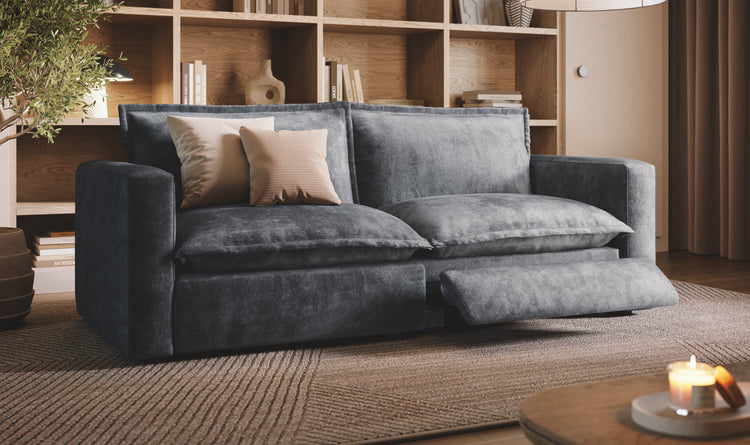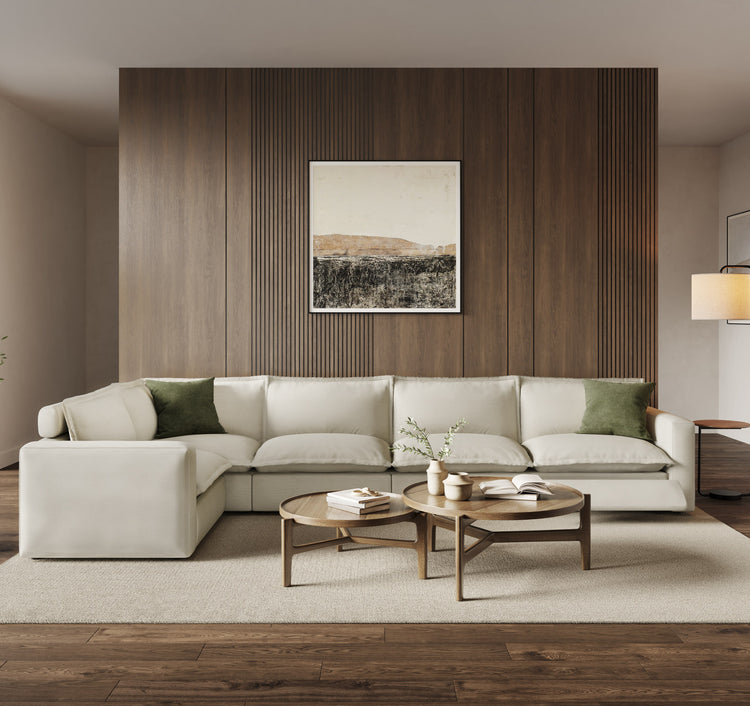Finding comfortable seating that fits perfectly in your home can be challenging, especially when space is limited.Reclining loveseats offer a smart solution by combining cozy seating for two with the luxury of adjustable positions in a compact design. These versatile pieces save space while providing the comfort features you want—from storage compartments to cupholders and charging ports. This article walks you through what matters most when choosing a reclining loveseat, including size considerations, mechanism types, materials, and features that will make your new furniture both practical and enjoyable for years to come.
What is a Reclining Loveseat?
A reclining loveseat is a two-seater that combines the space-saving aspect of a loveseat with built-in reclining capabilities. Unlike traditional loveseats that sit in a fixed position, reclining loveseats allow you to recline and lift your feet with reclining backrests and footrests—albeit without occupying as much space.

Whereas other sofas take up a lot of floor space, a reclining loveseat is 58-90 inches wide, making it perfect for apartments, small living rooms, or cozy dens. In contrast to single recliners that can only accommodate one person, a loveseat recliner enables couples to relax together without needing separate chairs.
4 Reasons to Choose a Reclining Loveseat
Reclining loveseats offer several practical advantages that make them worth considering for your home. These versatile furniture pieces combine functionality with comfort in ways that standard seating options cannot match.
1. Adjust Your Position Whenever You Need To
Reclining loveseats enable you to change positions whenever you feel like it. Sit upright to converse or dine, and then recline to lie back and relax or snooze. Most designs currently feature adjustable headrests so that anyone can tailor their position of comfort. Such flexibility of position-changing makes these loveseats perfect for anything from reading a book to watching TV.
2. Reduce Back Pain and Improve Circulation
Beyond comfort, reclining loveseats offer real health benefits. The reclined position reduces pressure on your spine and lower back, helping those with back pain. Raising your legs improves blood flow and decreases ankle swelling, especially after standing all day. Many people find that reclining helps reduce stress and creates a more relaxing environment for rest.
3. Takes Up Less Space Than Regular Sofas
A reclining loveseat is the space-maximizing use of minimal floor space. Measuring 58-64 inches in width, they fill the space that a full-sized sofa (80-96 inches) can't. Wall-hugger versions, most of which need 4-6 inches of space behind them to fully recline, save more space than the traditional old recliners, which occupy a lot of space. Space-saving like this makes reclining loveseats particularly ideal for apartments, condos, small living rooms, or as a second seating in the bedroom or home office.
4. Comes With Helpful Built-in Features
Reclining loveseats today come with practical features to enhance their utility. Most are fitted with center consoles that comprise of cupholders where one can position beverages in and within handy reach. There are storage bins for storing remotes, magazines, and similar small items. The more luxurious ones usually possess built-in power outlets and USB ports for the charging of items in use.
What Should You Consider Before Buying a Reclining Loveseat?
Before purchasing a reclining loveseat, several important factors deserve careful consideration to ensure you select the right piece for your home.
1. Know Your Space Measurements First
The first step in choosing a reclining loveseat is measuring your available space. Measure the width of your intended placement area, allowing for at least 2-3 feet of walking space in front of the loveseat. For depth, consider that traditional reclining loveseats require 15-20 inches of clearance behind them when fully reclined. However, wall-hugging recliners require 0" clearance to recline, as they protrude forward rather than backward when activated, and therefore are best suited for small rooms. Check doorways, hallways, and stairs at all times to ensure the loveseat will be able to fit where it is intended to go. Standard reclining loveseats range from 58-90 inches wide and 38-40 inches deep when not reclined, opening up to 65-70 inches when reclining.

2. Choose Between Manual or Power Reclining
Reclining loveseats have power or manual mechanisms with their respective merits. Manual recliners utilize levers or handles for position adjustments and require effort to move them. They're typically less expensive, do not consume electricity, and contain fewer mechanical parts that can break. Power recliners employ the easy press of a button for convenient adjustment and often more refined positioning control. They're ideal for mobility-impaired users but need to be installed near electrical outlets and are more costly initially. Some newer models have battery packs for easy placement, although these need to be recharged from time to time.
3. Pick the Right Material for Your Lifestyle
Fabric upholstery offers excellent flexibility for different needs. Velvet provides a rich texture and rich color depth but needs to be cleaned more carefully and can develop wear in high-traffic homes. Linen gives natural airiness and easy, textured appearances, but is more susceptible to stains. Microfiber is often the ideal option for people who have pets since it has extremely high durability, resistance to claw marks, and easy cleaning—most pet hair comes off easily in a hurry. Microfiber is also soft and resistant to stains, making it a great option for families with pets or kids. When selecting material, consider your daily household use, cleaning style, and how the fabric will complement your existing décor.
4. Set a Budget That Matches Quality and Features
Reclining loveseats typically range from $600 to $2,500 depending on quality, materials, and features. Simple models with manual mechanisms and synthetic upholstery are at the lower end, while advanced models with power recline, real leather, and additional features are pricier. Consider the lifespan of the loveseat—more robust mechanisms and frames can easily be worth the additional up-front cost by way of extended longevity. Warranty protection is important, particularly on power mechanisms and frames. Payment plans are generally offered by most retailers, but balance payment convenience each month against overall cost, as interest fees can significantly enhance the total investment.
What Styles of Reclining Loveseats Are Available?
Now that you've thought about size, how it reclines, and what it's made of, let's look at the different styles available. Whether you need something for a small apartment, a family room, or a home theater setup, there's a design that fits your space and how you like to relax.

1. Glider Recliner
Glider recliners incorporate the standard reclining mechanism with a smooth back-and-forth gliding action. The gentle gliding creates a rocking motion without the need for the space of traditional rockers. Anyone who wants to relax and de-stress loves this. You can glide both while upright and fully reclined, with the stable base keeping you secure at all times.
2. Power Recliner
Power recliners enable you to adjust positions with button presses instead of manual levers. These models stop at multiple positions, instead of the few manual recliners offer. Most include built-in USB ports for charging phones and tablets. While costing more upfront, power recliners make life easier for people with limited mobility or anyone wanting easy adjustment of comfort.
3. Wall-Hugger Recliner
Wall-huggers are perfect for smaller rooms with limited space. Unlike standard recliners that need ample space behind them, these models move ahead as they recline, needing only 4-6 inches of wall clearance. This innovative design makes them perfect for apartments and small living rooms without sacrificing comfort. You get the full reclining advantages without needing to redesign your entire room.
How to Keep Your Reclining Loveseat in Top Condition
Taking care of your reclining loveseat isn't complicated but makes a big difference. Regular cleaning and basic maintenance will keep it comfortable and looking good for years. The type of fabric and reclining mechanism you choose will determine exactly what care it needs. A little attention now saves you money and hassle later.
1. Clean Different Upholstery Types
Leather requires wiping with a damp cloth and occasional conditioning with leather-specific products to prevent drying and cracking. Avoid harsh chemicals that can damage the finish. Vacuum fabric upholstery weekly with an upholstery attachment to remove dust and dirt from seams and crevices. Blot (do not rub) immediately with a clean, dry cloth for spills. Microfiber is simple to spot clean with rubbing alcohol, but most materials require manufacturer-recommended upholstery cleaners to clean. Test the cleaner on a secret area first, always.
2. Maintain Smooth Operation
Lubricate moving parts of manual recliners every six months with a silicone-based spray to prevent squeaking and ensure smooth operation. For power recliners, regularly check wires and connections for wear, keeping them away from foot traffic areas to prevent damage. Remove debris that might accumulate under the loveseat or in track mechanisms using a vacuum with a narrow attachment. Follow the manufacturer's guidelines for weight limits to avoid straining the frame and reclining mechanisms.
3. Prevent Damage and Wear
Position your loveseat away from direct sunlight to prevent fabric fade and leather cracking. Apply fabric protector sprays that are appropriate for your upholstery type to guard against stains. Place covers or throws in high-contact areas to reduce wear on armrests and headrests. Trim the claws in pet houses and have furniture covers handy while not in use. Flip cushions periodically if they can be removed so that even wear occurs on all seating surfaces.
4. Address Common Issues
Loosen loose screws and bolts at regular intervals of a few months, especially the frame and reclining system. For sunken cushions, verify whether replacement foam or cushion inserts are provided by the manufacturer. Squeaking mechanisms are generally in need of lubrication or possibly debris accumulation in moving components. Electrical malfunction with power recliners can be diagnosed with inspections of connections and power supplies before service can be called. Make the owner's manual handy for troubleshooting information and warranty.
5 Common Questions About Reclining Loveseats
After learning how to maintain your loveseat, you might still have practical questions about daily use and ownership. These frequently asked questions address common concerns that arise when shopping for and living with a reclining loveseat.
Q1: How much space do I need for a reclining loveseat?
A reclining loveseat needs about 5-6 feet of width and 5 feet of total depth—3 feet for the upright loveseat and 2 feet behind it for reclining. Wall-hugger models need only 4-6 inches of space at the back. Don't forget to also measure your doorways and hallways, as you will need a minimum of 32 inches for delivery.
Q2: Is a rocker recliner or wall-hugger recliner better for your living room?
A rocker recliner loveseat offers a gentle rocking motion when upright but needs 15-20 inches of clearance behind it to recline, while a wall recliner (or wall-hugger) slides forward to recline, requiring zero wall clearance—making it perfect for smaller spaces while still providing comfortable reclining positions.
Q3: What's the best option for families with pets or children?
For families with kids and pets, go for microfiber upholstery. It resists stains, doesn't cling to pet hair, and holds up to scratching better than most fabrics. Look for performance fabrics with stain resistance or easy-clean leather. Dark colors or patterns hide small stains. Removable, washable covers offer extra protection.
Q4: How long do reclining loveseats last?
A quality reclining loveseat lasts 7-10 years with regular use. Higher-end models can last 15+ years. Manual recliners typically outlast power versions because they have fewer parts that can fail. Upholstery and cushioning wear out first, while frames last much longer. Regular maintenance like lubricating mechanisms and prompt cleaning adds years to your loveseat's life.
Q5: How important is warranty coverage?
Warranties typically cover mechanisms and electrical parts for 1-3 years and frames for 3-5 years. Premium brands may offer lifetime frame coverage. Focus on warranty coverage for the reclining mechanism since it's most likely to need repair. Look for warranties that include both parts and labor. Most warranties don't cover fabric wear or damage from exceeding weight limits. Extended warranties are most valuable for power recliners with their electrical components.
Find Your Dream Reclining Loveseat Today
You're now ready to shop for a reclining loveseat that fits your home perfectly. Measure your space first, and think about who'll use it most when choosing between manual and power options. Try sitting in different models if you can to test their comfort. Remember what matters most to you—style, material, or special features—and bring your measurements when shopping. Your perfect reclining loveseat is out there waiting—now you know exactly what to look for!







